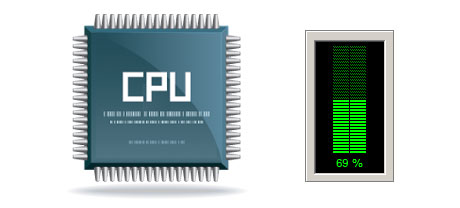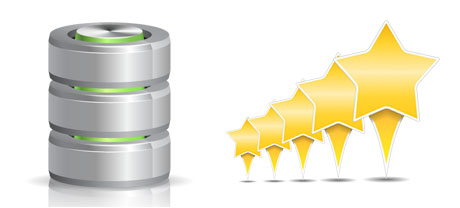For decades there was only 1 trustworthy method to store info on your computer – with a hard drive (HDD). Then again, this sort of technology is actually showing it’s age – hard disk drives are actually loud and slow; they can be power–ravenous and tend to create a lot of heat throughout intense operations.
SSD drives, alternatively, are really fast, consume a lesser amount of power and are much cooler. They furnish a completely new solution to file access and data storage and are years ahead of HDDs when it comes to file read/write speed, I/O efficiency as well as energy capability. Figure out how HDDs stand up against the modern SSD drives.
1. Access Time
Due to a revolutionary new approach to disk drive general performance, SSD drives enable for noticeably faster data file accessibility speeds. With an SSD, data accessibility instances are far lower (only 0.1 millisecond).
HDD drives count on spinning disks for files storage uses. When a file is being accessed, you need to wait around for the appropriate disk to get to the correct position for the laser to view the data file you want. This ends in a regular access rate of 5 to 8 milliseconds.
2. Random I/O Performance
The random I/O performance is very important for the functionality of any data file storage device. We’ve run in depth exams and have determined an SSD can handle no less than 6000 IO’s per second.
With an HDD drive, the I/O performance progressively enhances the more you employ the disk drive. Nonetheless, in the past it extends to a specific limitation, it can’t go faster. And because of the now–old technology, that I/O limitation is significantly less than what you could receive with a SSD.
HDD can only go as far as 400 IO’s per second.
3. Reliability
The lack of moving parts and spinning disks inside SSD drives, and the current improvements in electronic interface technology have led to a significantly risk–free data storage device, with a common failing rate of 0.5%.
HDD drives use rotating disks for storing and browsing info – a technology going back to the 1950s. With hard disks magnetically hanging in mid–air, rotating at 7200 rpm, the prospects of one thing failing are much increased.
The common rate of failing of HDD drives can vary among 2% and 5%.
4. Energy Conservation
SSDs do not have moving elements and need very little chilling energy. In addition they demand not much electricity to operate – lab tests have demonstrated they can be powered by a standard AA battery.
In general, SSDs take in between 2 and 5 watts.
HDD drives are famous for becoming loud. They need further electricity for chilling applications. On a server that has a lot of HDDs running all of the time, you will need a great deal of fans to ensure that they’re kept cool – this may cause them far less energy–economical than SSD drives.
HDDs consume somewhere between 6 and 15 watts.
5. CPU Power
The quicker the data file accessibility speed is, the faster the file demands will likely be treated. Therefore the CPU won’t have to arrange allocations waiting around for the SSD to respond back.
The average I/O delay for SSD drives is just 1%.
HDD drives enable sluggish accessibility speeds compared to SSDs do, which will result for the CPU being required to hold out, while saving resources for the HDD to find and give back the required file.
The common I/O delay for HDD drives is around 7%.
6.Input/Output Request Times
It’s about time for some real–world illustrations. We ran an entire system backup with a server using only SSDs for file storage purposes. During that procedure, the average service time for any I/O demand stayed below 20 ms.
Using the same hosting server, yet this time furnished with HDDs, the effects were completely different. The average service time for any I/O call fluctuated between 400 and 500 ms.
7. Backup Rates
Speaking about back ups and SSDs – we have discovered a great progress in the back–up speed as we turned to SSDs. Right now, a usual server back up can take solely 6 hours.
On the other hand, on a hosting server with HDD drives, a comparable data backup may take three to four times as long to complete. An entire backup of any HDD–equipped web server typically takes 20 to 24 hours.
With MotivatedTalents, you will get SSD–operated website hosting solutions at reasonable prices. Our hosting include SSD drives by default. Apply for an website hosting account with us and experience the way your web sites can become much better instantaneously.
Hepsia
- Live Demo
Service guarantees
- Subscribe today. There won’t be installation charges and you will have total root/administrator access to the server. 99.9% network uptime is guaranteed.
Compare our prices
- Simply examine the allocations and characteristics provided by MotivatedTalents’s Virtual Private Servers. See which VPS Web Hosting configuration gives you everything that you’ll need to manage your dynamic online presence easily.
- Compare our hosting plans
Contact Us
- We’re on duty for you night and day to respond to any inquiries about our VPS Web Hosting services. 1–hour reply–back time frame warranty.














